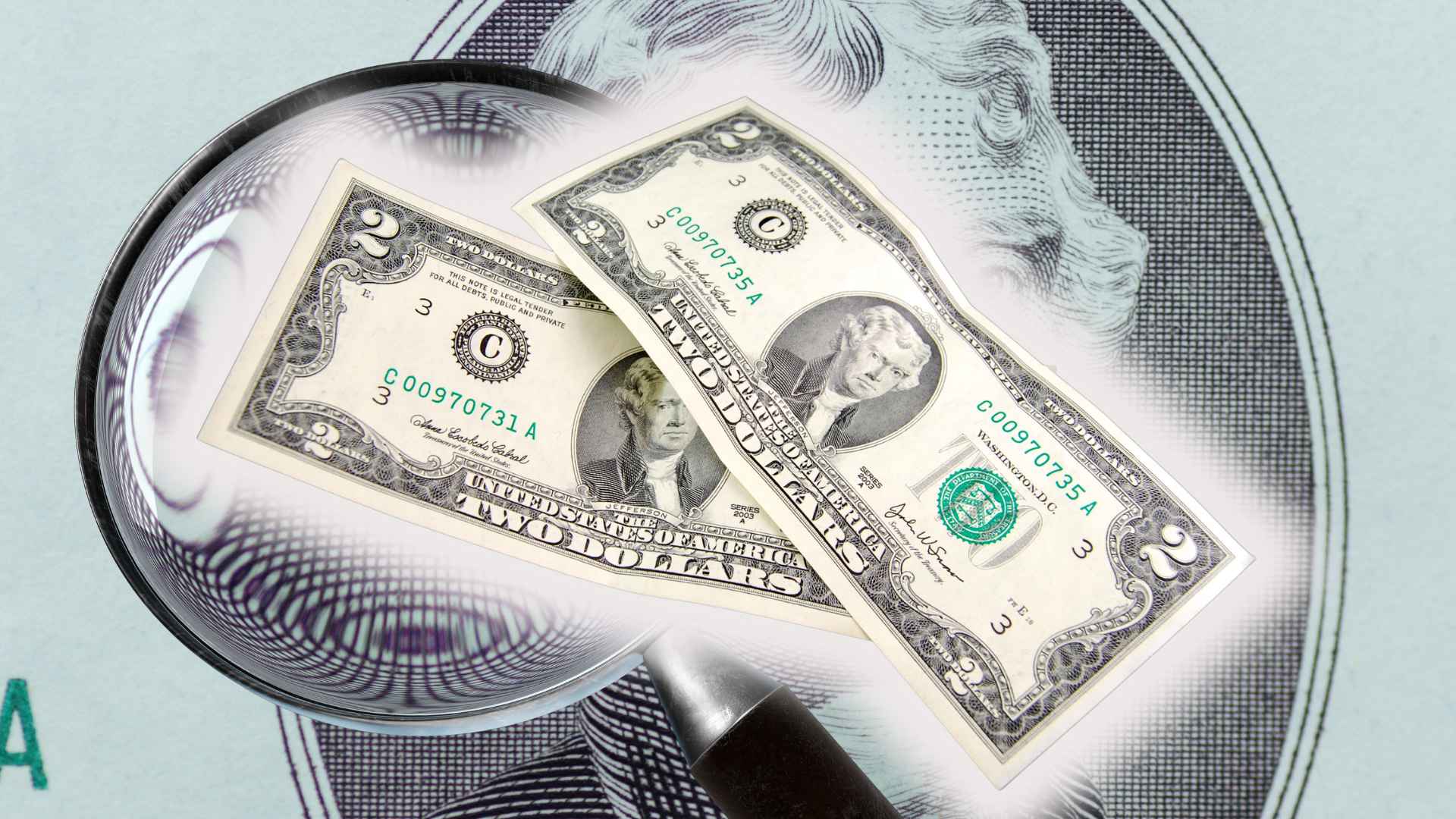Millions of two‑dollar bills remain in circulation, but savvy collectors will pay five figures for the rarest—sometimes as much as $20,000 for a single pristine note.
Anyone with an old wallet, a forgotten lockbox, or a parent’s dresser drawer could hit the mini‑lottery. Why? Because the small details on a humble $2 bill can turn pocket change into serious cash—if you know what to look for and act fast before demand cools.
Serial numbers that boost a $2 bill’s worth far beyond face value
The fastest way to size up a bill is its serial number. A serial “1” on the 1976 series has fetched about $20,000 at auction, according to Heritage Auctions. Other eye‑catchers include:
- Solid numbers (88888888) – every digit identical
- Ladder numbers (12345678) – digits run in order
- Low numbers (00000001–00000009) – single‑digit bragging rights
See something quirky? Ask yourself, “Could this run of digits be the golden ticket?”
| Serial style | What it looks like | Why collectors care |
|---|---|---|
| Solid | 77777777 | Extreme rarity; striking display piece |
| Ladder | 12345678 | Natural counting pattern is hard to find |
| Low | 00000005 | Shows the note was among the very first printed |
Age and scarcity factors collectors watch when evaluating two‑dollar notes
Older isn’t automatically better, but it helps. Notes printed a century ago—or runs with limited print totals—command premiums because fewer survive uncirculated. Still, even a modern bill can soar in value if the print run was small or many have already been destroyed. Consequently, checking both the series year and the Federal Reserve district letter can reveal an underrated gem.
Condition makes or breaks big money. Fold lines, smudges, and sun‑faded ink knock hundreds—even thousands—off a potential sale price. Collectors grade on a tight scale; only crisp, uncirculated notes reach the headline figures. Wondering how to protect yours? Slip it into an acid‑free currency sleeve and avoid unnecessary handling.
What to do if you think your $2 note is a hidden gem
First, compare recent prices on eBay or the Professional Coin Grading Service website. Next, visit a reputable coin shop or a well‑reviewed pawn shop for an in‑person opinion. Still unsure? Submit the note to a grading service; the fee can be worth it if the verdict bumps your bill into the four‑ or five‑figure club.
Everyday Americans may be holding unexpected wealth in a $2 bill. A quick check of the serial number, age, and condition could turn your tip‑jar castaway into a collector’s prize.

